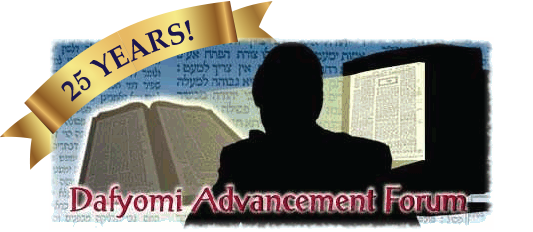What are "Chartumim;" and what are "Lateihem"?
Refer to 7:11:2:1; 7:22:0.1:1; 7:22:2.3:1; and 7:22:2.4.
Earlier, in 7:11 & 7:22, in connection with the snake and Makas Dam, respectively, the Torah referred to the sorcerers as "Chartumei Mitzrayim". Why does it subsequently refer to them as "ha'Chartumim" S'tam?
R. Bachye: Initially, the Torah refers to them as "Chartumei Mitzrayim", due to the fact that they were extremely wise and held in high esteem by the people. By Makas Tzefarde'a however, their esteem in the eyes of the people, so the Torah refers to them ? in Pasuk 3 - as ha'Chartumim S'tam, and finally, by Makas Kinim, after they conceded that it was 'Etzba Elokim", 1 something that they were unable to emulate, their esteem dropped further and the Torah calls them "ha'Chartumim" minus a 'Yud' ? in Pasuk 15.
Ramban: From the moment the Chartumim conceded that it was the work of Hashem, Par'oh no mlonger called them to emulate Moshe and Aharon.
Why were the magicians unable to produce lice?
Rashi, Ramban #1 and R. Bachye: Because demons have no power over anything that is smaller than a barley-grain (not only to create them but even to gather them and transport them from one location to another ? R. Bachye). 1
Ramban #2: The magicians struck the earth (like Aharon did) and said the necessary incantations to arouse the demons, or did whatever they normally did to produce the lice, but it did not work (because Hashem decreed that it should fail).
Ramban #3: They were perfectly capable of changing the water into blood and of bringing up frogs from the river, 2 but creating lice from earth lay exclusively in the hands of Hashem. 3
Seforno: Because witchcraft is incapable of creating anything that moves.
Moshav Zekenim, Hadar Zekenim, Da'as Zekenim and Rosh: Refer to Answer #1. Nor could they produce lice via witchcraft (sorcery), because witchcraft only works if the magician is standing on the ground 4 (Yerushalmi Sanhedrin 6:6), and here all the earth had turned into lice. 5
This conforms to one opinin in Sanhedrin 67b. See Torah Temimah, note 4.
Sanhedrin 67b. Another opinion there states that they could produce objects of any size, but that they could not gather objects that are smaller than a barley-grain to one place.
Ramban: As the Torah writes in Bereishis 1:24.
Hadar Zekenim: It says "l'Hotzi Es ha'Kinim, v'Lo Yacholu," i.e. they tried to remove the lice from under their feet in order to stand on the ground, but they could not.
R. Chaim Kanievski zt'l: The entire ground was covered with lice to the depth of an Amah.
Why does the Torah repeat, "va'Tehi ha'Kinam ba'Adam u'va'Behemah"?
QUESTIONS ON RASHI
Rashi writes: "L'Hotzi Es ha'Kinim - [I.e.,] to create them from a different source." But perhaps "l'Hotzi" means they tried to remove the plague of lice?
Gur Aryeh: We do not find that the Chartumim attempted to remove any of the Makos. Their only goal was to replicate them - in order to discredit Moshe. 1
The Havah Amina seems difficult. The Pasuk says "va'Ya'asu Chen" - they too tried to do so, i.e. exactly as Moshe and Aharon did. Had their goal been to counter-act the plague, the Pasuk would not have used the word "Ken." (CS)
Rashi writes: "[They attempted to create them] from a different source." Why does Rashi emphasize this?
Gur Aryeh: The entire land was already swarming with lice. Had they attempted to bring forth lice just anywhere, any results wouldn't even have been noticeable.
Rashi writes: "'But they were unable' - Because a demon has no control over a creature smaller than a [grain of barley]." Why is this so?
Gur Aryeh #1: Demons are forces of Tum'ah; 1 they can only act upon what is susceptible to Tum'ah. The smallest item that causes Tum'as Mes, is a [piece of] bone the size of a grain of barley.
Gur Aryeh #2: Anything smaller than a grain of barley has no independent identity; it is merely part of the earth in general. 2 The demons have no power over the earth in general.
And the Chartumim themselves operate via Tum'ah; refer to 7:22:0.1:1.
Gur Aryeh: This is the very reason that such a small piece of bone has no Tum'as Mes. Etymologically, the word "Se'orah" (root Sin- Ayin-Resh) shares the same root as "Shi'ur" - a significant amount.




